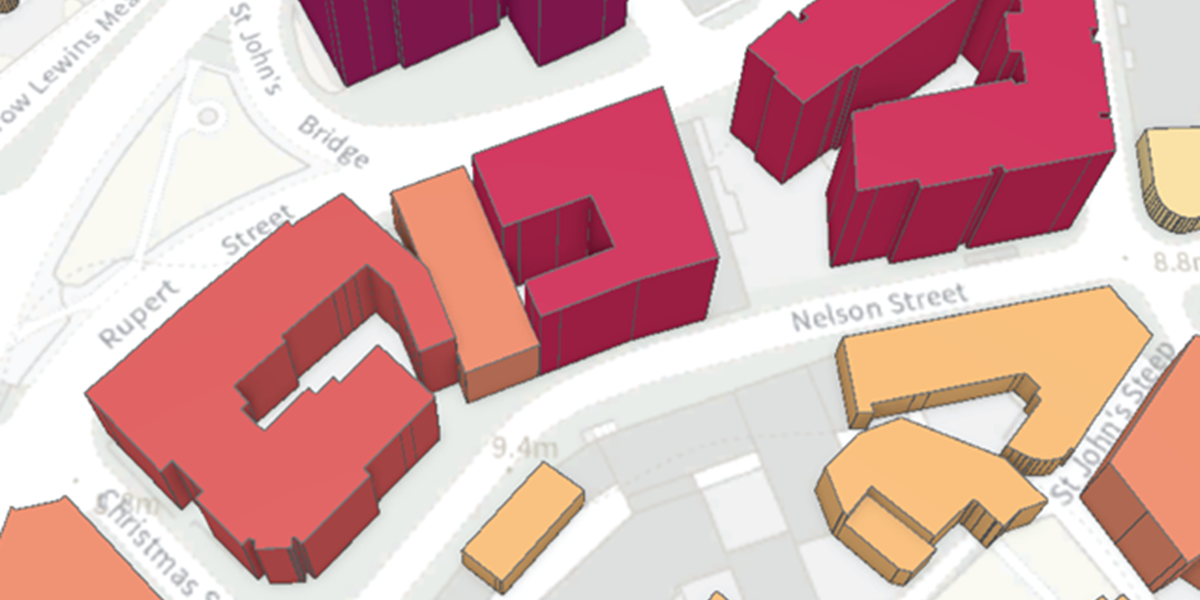
Image source: Ordnance Survey
Ordnance Survey (OS) has added new layers of detail to its OS National Geographic Database (OS NGD), emphasising its value in supporting emergency services.
The database now includes information on the number of floors in a building, interactions with bridges and access locations linked to the increased coverage of sites.
The national mapping agency said that machine learning model has been used to collate the majority of the data and record the existence of nearly 47 million floors in office and residential buildings in Great Britain. They are all occupiable at or above ground level and do not include basements and rooftop plant rooms, although the former was made available in a data release earlier this year.
OS said the detailed floor information will be a great asset for emergency services, providing them with greater situational awareness, such as a fire in a high rise building when evacuation will be required, or crime analysis. It will also help the identification of high rise buildings which require building fire risk reviews.
More than 23 million office or residential buildings in Great Britain have had their number of floors value recorded by OS.
Essential access information
The number of access locations to sites has been increased to show where vehicles and/or pedestrians can enter a site. This is essential information for blue light responders on an emergency call, whether understanding where to access an area during a fire, incident or flooding, or dealing with threats from protesters for example, progressing through a large area.
It will also facilitate better emergency planning for those more complex sites with multiple access points, such as schools, hospitals, factories and industrial sites.
The bridge interactions show where bridges exist with other networks (road, rail or water) or footpaths. This will help emergency services identify the most efficient routes for reaching an incident by understanding where bridges exist with other infrastructure, such as a railway going over a road, planning the management of that incident and the impact of any diversions over time.
It will also support the analysis of high risk areas for incidents, enable the effective planning for events that need to be planned through a city, and provide for better planning for maintenance and health and safety inspections.
In addition, two new classifications of land use sites have been added to the OS NGD.
The data is being made available to emergency services under the Public Sector Geospatial Agreement.
Supporting services
John Kimmance, chief customer officer at OS, said: “Ordnance Survey has a long history of supporting the emergency services with its trusted and accurate mapping data, which has become integral to the delivery of so many of their tasks.
“The more detailed data we can provide enables them to carry out these critical or routine services even more effectively, supporting a safer and more resilient Great Britain for all our citizens.”
Steve Taylor, strategic data lead at the National Fire Chiefs Council, expressed his approval of the new release.
“Fire services have always made great use of the data that OS provides to enable them to respond to incidents and to understand the risk in their communities, but the new data being released by OS far exceeds anything that has come before,” he said.
“In particular, data such as numbers of floors in buildings and details around access points to sites will really help ensure that we can help keep our communities safer, both in planning and responding to incidents, and in trying to prevent them happening in the first place.”





